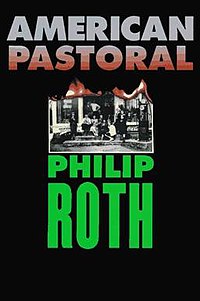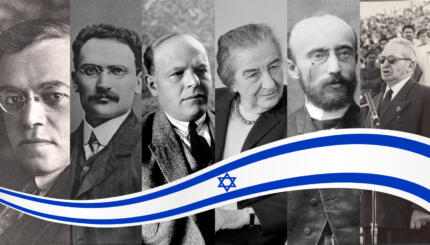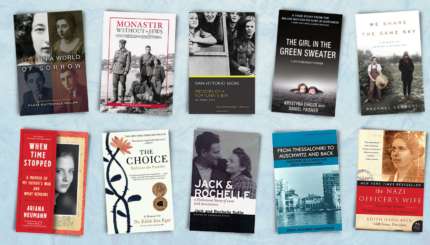If you were to look at the life of Jewish American novelist Philip Roth, and the lives of those characters found in his books, you would probably notice some startling similarities. From Goodbye Columbus to his most recent work, it seems that many details of Roth’s personal life makes an appearance on the page: his lower-middle-class Newark youth, intellectual awakening at the University of Chicago, his failed relationships, the Jewish communal backlash against his writing, and so on. Roth has poured his life into his fiction, to the point where even the most astute reader cannot precisely say where real life ends and imagination begins.
In much of Roth’s earlier work, he writes as the angry young man—brilliantly demolishing the Jewish American family in Portnoy’s Complaint, but doing more of his work with a hatchet than a scalpel. Roth decried the conformism of his parents’ generation, from the country-club misadventures of the title story from the National Book Award-winning Goodbye, Columbus (1959), to Alexander Portnoy’s unforgettable erotic adventures with liver in Portnoy’s Complaint (1969). Portnoy’s is one of the great American comic novels of the postwar era, a single furious blast of contempt by a smart, impetuous young man for the closed Jewish world of his parents. “You mustn’t do this, you can’t do that—hold it! don’t! you’re breaking an important law! What law! Whose law! They might as well have had plates in their lips and rings through their noses and painted themselves blue for all the human sense they made! Oh, and the milchiks and flaishiks besides, all those meshuggeneh rules and regulations on top of their own private craziness!”
Roth reacted to the success of Portnoy’s Complaint, and the concomitant howls of protest from the Jewish
 community, by incorporating himself, and his novels, into his work. Philip Roth became his protagonist and alterego Nathan Zuckerman, angry young Jewish man and novelist, and Portnoy of Portnoy’s Complaint became “Carnovsky.”
community, by incorporating himself, and his novels, into his work. Philip Roth became his protagonist and alterego Nathan Zuckerman, angry young Jewish man and novelist, and Portnoy of Portnoy’s Complaint became “Carnovsky.”

Help us keep Jewish knowledge accessible to millions of people around the world.
Your donation to My Jewish Learning fuels endless journeys of Jewish discovery. With your help, My Jewish Learning can continue to provide nonstop opportunities for learning, connection and growth.
Roth would go on to use his alter ego as protagonist in such novels as My Life as a Man (1974), The Ghost Writer (1979), and Zuckerman Unbound (1981). Roth’s work became a hall of mirrors, where Roth, Zuckerman, his other alterego David Kepesh (in books like The Professor of Desire), and his character “Roth” intermingled, and the distinction between fiction and reality grew hazy. Roth was stealthily chronicling his own life, and the lives of his entire generation, recycling autobiography and history into a distinctive mélange of his own making. Whether imagining the strange afterlife of Anne Frank in The Ghost Writer, or Zuckerman’s relationship with his brother in The Counterlife (1986), Roth considered the strange fate of being a Jew in the tormented 20th century, as in this aside from The Ghost Writer: “How could even the most obtuse of the ordinary ignore what had been done to the Jews just for being Jews, how could even the most benighted of the Gentiles fail to get the idea when they read in Het Achterhuis that once a year the Franks sang a harmless Chanukah song, said some Hebrew words, lighted some candles, exchanged some presents—a ceremony lasting about ten minutes—and that was all it took to make them the enemy.”
Unlike other novelists of his generation, like Joseph Heller, and even Saul Bellow, who appeared to lose steam as they aged, Roth’s work grew more complex and satisfying as time passed. Roth was one of the vanishingly few contemporary novelists, Jewish or otherwise, who wrestled with the state of Israel, in his 1993 novel Operation Shylock. And Roth brought back Zuckerman as a narrator in a series of brilliant novels beginning in the mid-1990s, including the National Book Award-winning American Pastoral (1997), I Married a Communist (1998), and The Human Stain (2000). Roth would win the Pulitzer Prize for American Pastoral, the National Book Award again for Sabbath’s Theater, and the National Book Critics Circle Award for The Counterlife and the memoir Patrimony.
With these books, Roth turned his gaze from his own life to American history, and used the familiar odds and ends of his earlier work—Newark childhood, family life, the work of the novelist—to tell a larger story of change and loss. The angry young man was seeing the world of his youth and young manhood in subtler shades: “And what is wrong with their life?” the novelist wonders at the conclusion of the middle-class Jewish tragedy American Pastoral. “What on earth is less reprehensible than the life of the Levovs?”
In The Plot Against America (2004), Roth constructs a counterfactual history in which the incredibly popular transatlantic flier Charles Lindbergh impulsively enters the 1940 American presidential race against two-time winner  Franklin Delano Roosevelt (instead of Wendell Willkie, who actually ran and lost), and defeats him.
Franklin Delano Roosevelt (instead of Wendell Willkie, who actually ran and lost), and defeats him.
Lindbergh, a pro-German apologist in real life who met with, and accepted medals from, Adolf Hitler, keeps the U.S. out of World War II, and protagonist Philip’s family is riven apart by the new president’s “pro-American” policies, which appear to target Jews in particular. The war goes on without the U.S., and President Lindbergh refuses Britain and the Soviet Union the American arms and munitions they need to fight the Germans. Instead, he devotes the country’s muscle to remaking American Jews in his own image, sending them away from the crowded inner cities and into the rural wild. Roth borrows from the real-life history of the war years, Lindbergh’s speeches and published writings, and his own memories of his Newark youth to create a terrifyingly mundane vision of America gone astray.
Roth would further expand his legacy with the “Nemesis” series of short novels, in which the author, now in his seventies, explores the terrors of aging and death. Everyman (2006) and Nemesis (2010), while not quite at the level of Roth’s finest work, are still exceptional studies of man beset by the pervasive fear of the abyss, whether it is the series of illnesses that attack the protagonist of Everyman, or the wartime polio crisis emptying out the streets of Newark in Nemesis.
No matter who the ostensible main character of each novel is, Roth’s protagonist always seems to be a stand-in for himself. Some might consider this the ultimate narcissistic self-absorption of the artist. Roth would likely argue that it was not self-absorption, but self-expression–of the same sort that he has always done, and the same as he will continue to do for years to come.


